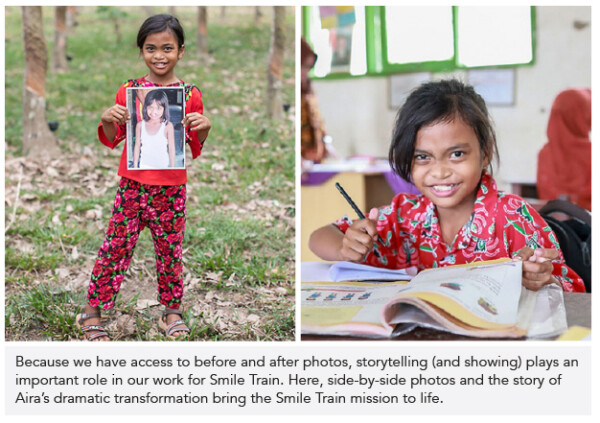April 22nd, 2021
“Once upon a time ….” “in a galaxy, far, far away ….” “it was a cold and rainy night ….” “This is how it all began ….”
On April 27, National Storytelling Day, we celebrate the tradition of story, one of the hardest working creative forces in entertainment — and fundraising.
This special occasion is a great time to share a story or read a book with a child, treat yourself to an hour or so of reading, take pen to paper to craft your own unforgettable tale — and to reflect on how storytelling is working for your fundraising appeals.
The National Storytelling holiday was created and announced to the public in 2009, a rather recent event in human history. But of course, storytelling has been around since cavemen first painted on the walls of their caves.
Whether it’s a tale of superheroes defending the universe or donations dramatically transforming the life of a child, a story still connects us as nothing else — allowing us to experience vicariously the satisfaction of exciting, positive change.
As fundraisers, MarkeTeam has long recognized the power of storytelling. We feature stories in direct mail and digital to show the rewards of donor gifts in action.
How Stories Work For Our Clients
For Smile Train, we typically focus on stories about children living with untreated clefts as a way to help readers “feel” what it’s like when a child nearly chokes to death while breastfeeding because their cleft makes it impossible to suckle properly … to be bullied, rejected, ostracized and left behind while the other children play together, or to be afraid to look up in class for fear they may be called upon.
For UNICEF, we tell stories about the terror a family feels after being driven from their home by violent conflict — the mix of panic and adrenaline that comes when parents wake their children in the middle of the night, telling them they can bring one toy before plunging off into the unknown, pushing through fear and fatigue In a frenzied flight toward safety.
These are just some of the many stories we tell to engage our readers’ emotions, to put them in the shoes of the vulnerable before we tell them how their donation can help.
There are many variations, but effective stories include: a hero (the person striving to overcome circumstance — not your nonprofit), a villain (the circumstances or opposing force that’s complicating their lives), a pivotal change (the help provided) and a different outcome (made possible because a donor gave).
In today’s data-rich world of clicks and statistics, there’s a temptation to focus on information and rational arguments about the good work you’re doing. Of course you want to prove you’re using donor dollars responsibly. But don’t let numbers get in the way of providing emotional payback for your donors.
Nonprofit supporters send money and get nothing tangible in return — except the satisfaction of creating good in the world. Stories align your work with positive emotions and deliver satisfaction (pride and relief), that keeps donors engaged.
Every story offers donors a chance to feel like a hero for a moment and to take satisfaction in the work you’re doing together. Share stories that dramatize the before and after of the positive change your donor makes possible.
Keep it Human
Your organization helps real people, not numbers on a spreadsheet. Use names and locations if possible, so donors can see their donations in action.
Leverage Before and After
Provide a peek into the pain of the “before” and articulate the “stakes” of not correcting the problem. It’s important not to disrespect your audience, but without discomfort in the “before,” there’s little opportunity to dramatize the difference you’re making.
Often photographs are the most powerful way to show potential donors the difference their gift will make. For instance, the Smile Train “before” and “after” photos dramatize the remarkable transformation in a way that is even more powerful than a verbal description.
Provide Detailed Proof
Include quotations and as many specifics as possible. For example, if your organization supplies a bicycle for a particular girl in the developing world, be sure to explain how that bike saves her hours of time each day and makes it possible for her to remain in school.
Explain The Ripple Effect
The long term effect of your work will continue for decades. Because the girl in your story can continue her education, she’ll have more independence. It’s not just a bike; it’s transportation to a brighter future for her and her family.
Entertain to Engage
Emotional stories deliver a strong shot of endorphins that makes a donor feel good and continue engaging with your brand. They recast challenges as problems that can and will be solved — thanks to their generosity. These feelings are the reason donors support your work in the first place.
Feed the Donor’s Hunger to Feel Good and Make a Difference
Lastly, include stories to keep donors feeling connected to your work. At the end of the day, nonprofit giving is a way to help the good guys — the people you help and your donor — win.
Blog written by Melanie Merrifield | Associate Director, Content and Brand Strategy

